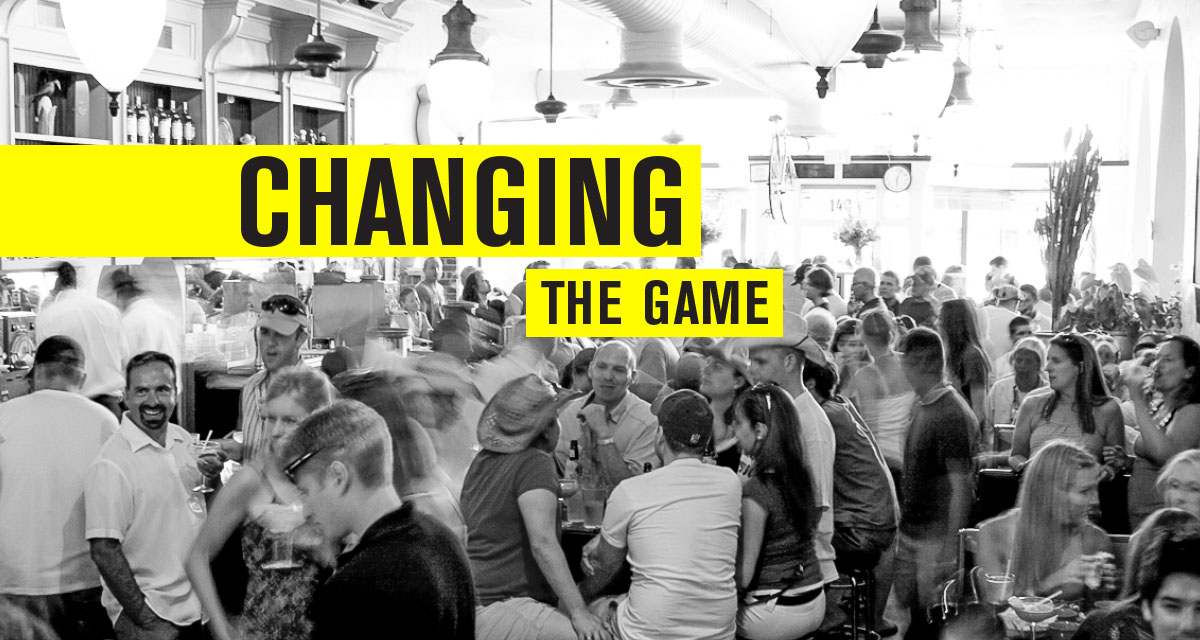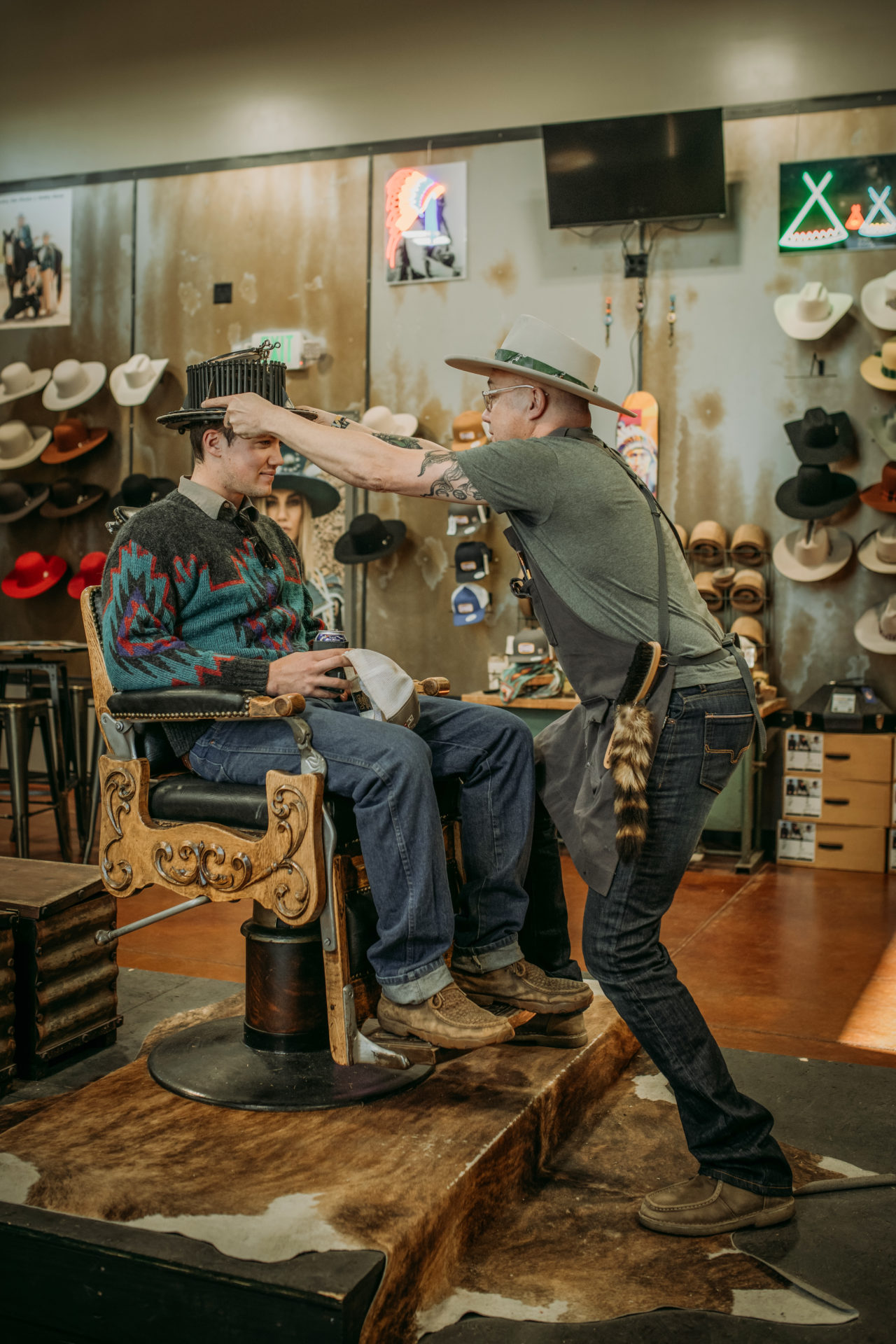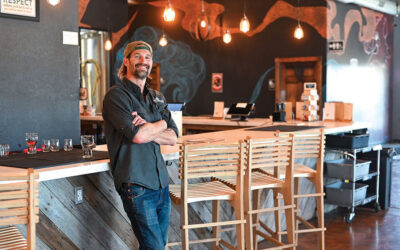The pandemic has local businesses adapting to a new world
By Jared Fiel
While we are all trying to find some degree of normal in this pandemic, local businesses in every sector are trying to do the same with the added stressors of worker shortages and supply chain issues.
Restaurants, offices, retail and manufacturing businesses have always had to adapt, but the pandemic has caused every area of the economy to struggle to adjust to constantly changing circumstances, while simultaneously dealing with a customer base willing and eager to spend money.
“COVID changed the game,” says Pat McGaughran, owner of The Rio Grande restaurants in Fort Collins, Greeley, Boulder, Lone Tree and downtown Denver. “We were working hard to be relevant before the pandemic. Now we are looking at repositioning our business and asking what it means to be a restaurant these days. We have found ourselves going back to look at why we started doing this in the first place.”
The Rio survived much of the pandemic by changing its business model to focus on carryout (with many waitstaff working deliveries to stay employed). They also used federal Paycheck Protection Program loans to keep the doors open. “That program saved our bacon,” McGaughran says. “I think we utilized it to the full extent of the program.”
At the Rio, McGaughran not only had to deal with a pandemic, but also a kitchen fire in July that shut down the Fort Collins location and forced a move to a temporary location on College Avenue. That was when the supply chain issues really started to surface, he says.
“We couldn’t take any of the old equipment to the new location, and we really had to scramble,” McGaughran says. “We had to shut down for three days just to get refrigerators.”
He says supplies for to-go items as well as menu ingredients are harder to find and much more expensive. “Costs are skyrocketing.” The company recently had to contract its beef purchases for the next year at a much higher price than in the past, but at least he knows the price is locked in, something most smaller restaurants can’t count on.
And many of these daily
decisions made McGaughran look at why he started the Rio 30 years ago. A few months ago, he was approached with a plan to use chicken thigh meat instead of breast meat. “Do I want to cut costs or keep with what I want and what Rio customers have come to expect?” he says, noting they are sticking with breast meat even if it means adding to the cost on the menu.
Coming back to that original plan for the Rio has also helped with retaining workers despite the shortage. “A lot of places are looking at how to do more with less,” he says. “But we are about doing more with more. We are doubling down on our community. We know people will come if they get the experience they know.”
What that means is that by hiring more staff, customers get the service they have come to rely on and employees don’t have to try to do everything single-handedly, which helps relieve stress and leaves them better able to focus on customers. “It all goes back to the way we started,” he says.
While restaurants such as the Rio with several hundred employees can make it work, small restaurants are finding the daily struggle is all too real.
Allie Menard started Sandos, a sandwich shop in downtown Loveland, in April. It was an idea that transformed from a food truck to a brick-and-mortar location focusing on fast casual carryout service. “At first, I thought, ‘Am I ridiculous?’ But with the pandemic, there was this opportunity, so I changed my business plans,” she says.
And when she first opened, things worked out great. “There was no struggle with any food deliveries,” she says. “And then it slowly started to change. The price for minimum quantities went up. Then there was a shortage of drivers.”
Menard developed a co-op arrangement with several smaller businesses in town where they “piggyback” on other orders to meet those minimums and keep supplies going. “This system is really squeezing out the little guy,” she says. “You have to work so hard just to keep the doors open.”
And that’s not always possible. A few times Menard has had to post a sign that the shop was closed for the day because she couldn’t get the ingredients she needed. “Closing my doors really bothers me,” she says. “Every day you aren’t open is a day you don’t make any money. It’s so hard because so much of it is out of my control.”
Life in (and out) of the office
In February 2020, Madwire, a technology company that provides business management and marketing software, employed more than 500 people…and every one of them reported every day of the week to either the main Fort Collins office or a location in Austin, Texas.
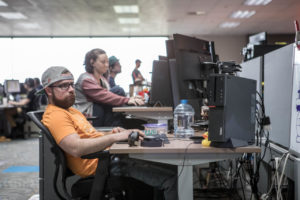
Madwire’s Fort Collins office space, photographed in 2018, prior to the pandemic. Today, many of their staff permanently work remotely.
The company thrived on the same kind of fun work atmosphere you hear about in Silicon Valley, with tables for pool and ping pong and pinball games at the ready.
Within a month of the pandemic lock down, all their employees started working from home, and it became clear that was the way of the future, according to Farra Lanzer, director of public relations for Madwire. “Our people really thrived being out of the office,” she says.
Today, as many companies have brought employees back to their offices, Madwire now allows employees to work from wherever they want. The company closed the Austin office and some employees–mostly salespeople–still report to the Fort Collins office.
“We watched teams meet goals and get things accomplished better than they ever had,” Lanzer says.
For Brandon Lilly, senior brand director at Madwire, the move has meant new opportunities for people. “It really opened up our talent pool,” he said. “Our sales people really thrive on the office environment, but for most of our developers, they aren’t going into the office ever.”
As far as the worker shortage, Madwire has not been affected much–mostly due to the new policy. “We are probably seeing a decrease in the number of people applying,” he says. “But there is no reduction in the quality. And that actually makes our jobs easier and saves time in going through applications.”
If all companies start going to this model, it will leave a lot of empty office space. Lilly is starting to see office spaces being used in new ways–even outside of Madwire. He says some office buildings are making their spaces available for people who rent the space for in-person or remote meetings.
Life (of the Party) …
Lilly isn’t just the brand director at Madwire. He is also the owner of Life of the Party in Fort Collins, which provides costumes, props and makeup.
“October of last year was lining up to be the biggest month in our history,” he says. However, supply chain issues for many costumes and other items meant Lilly’s company was unable to fill the need for all the folks who were ready to celebrate Halloween.
“We basically doubled down on accessories this year,” he says, which meant people may not have been able to get a full costume, but at least they could dress some of the part.
Lilly says it has been difficult competing with the big party supply places on orders, but at least the worker shortage has not affected them much. While they pay a little over minimum wage for a lot of the jobs in the store, he says many people apply so they can learn the tricks of the trade.
“They really do learn something here,” he says. “They can learn special effects makeup from people who have been doing it a long time.”
Business to a T
In a time when a lot of people are working from home, many are looking for soft and comfortable t-shirts, sweats and more.
When your company is all about printing company logos on soft and comfortable t-shirts, sweats and more, you soon find yourself competing with everyone on the planet for supplies. That’s what Go West T-Shirt Co. in Fort Collins has seen, according to Office Manager Rob Riss.
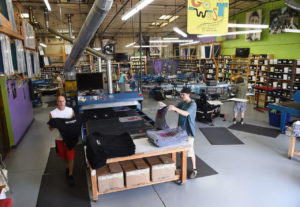
Go West T-shirt Company is an industrial park business that makes t-shirts mainly for the beer industry.
“We order a full batch and then we get only smalls and 3XL,” he says. “You get what you can get. Our competitors are draining the sizes.”
What that means for Go West customers is that sometimes they may not get the exact style or brand they want. “It has meant that sometimes they just have to take the black shirt they can get. We don’t like it for our customers, but the choices are really pinched down right now,” Riss says.
A lot of Go West’s business is local brewery tasting rooms and other retail establishments. During the height of the lockdown, nobody was ordering. “Now they are buying clothes with a vengeance,” Riss says.
One advantage for Go West is that they have good relationships with U.S. manufacturers. Riss said most companies get less than 5 percent of their garments from the U.S. while Go West is about 50 percent. “You pay a premium to get USA companies, but it really sheltered us to have those relationships,” he says since foreign companies seem to be experiencing the bulk of the supply chain delays.
Even with those relationships, Riss says turnaround time on some orders has gone from three weeks to six. “There is no end of this in sight,” he says. “We are prepared to be like this indefinitely.”

